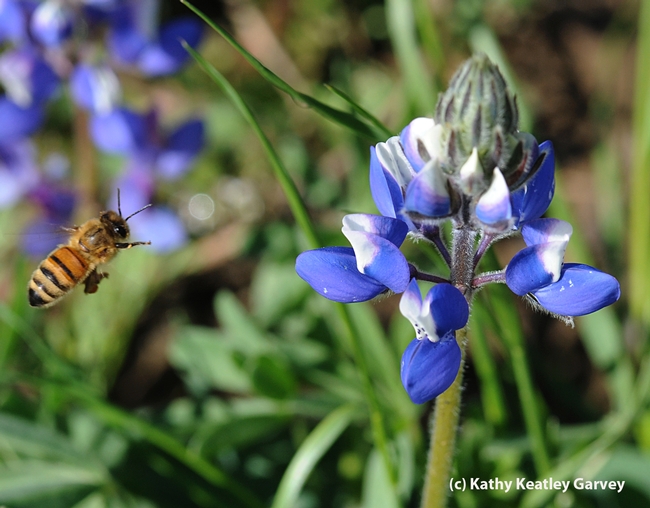Sometimes you see honey bees "making a beeline."
Such was the case when this honey bee (below) encountered a native wildflower, blue lupine (Lupinus).
Lupines are known more as pollen plants than nectar plants, according to Frank Pellett's book, American Honey Plants, a Dadant publication. Lupines, native to North America, belong to the legume family (Fabaceae).
"There are many species of lupines which are common, especially in the plains region and west to the Pacific coast," Pellett wrote. "Some are of no value to the bees, or yield pollen only." However, beekeepers in Colorado and Texas, he acknowledged, tout it for the nectar, too.
Authors C. E. Sanborn and E. E. Scholl, in their book, Texas Honey Plants, published in 1908, considered the blue lupine or bluebonnet (Lupinus subcarnosus, the state flower of Texas), as a good source of honey and of pollen. They described the pollen as "very bright" and "orange."
No matter what it's considered--a good pollen plant or a good nectar plant, depending on the locale, species and point of view--it's very attractive to honey bees.
They'll make a beeline for it.
Attached Images:


